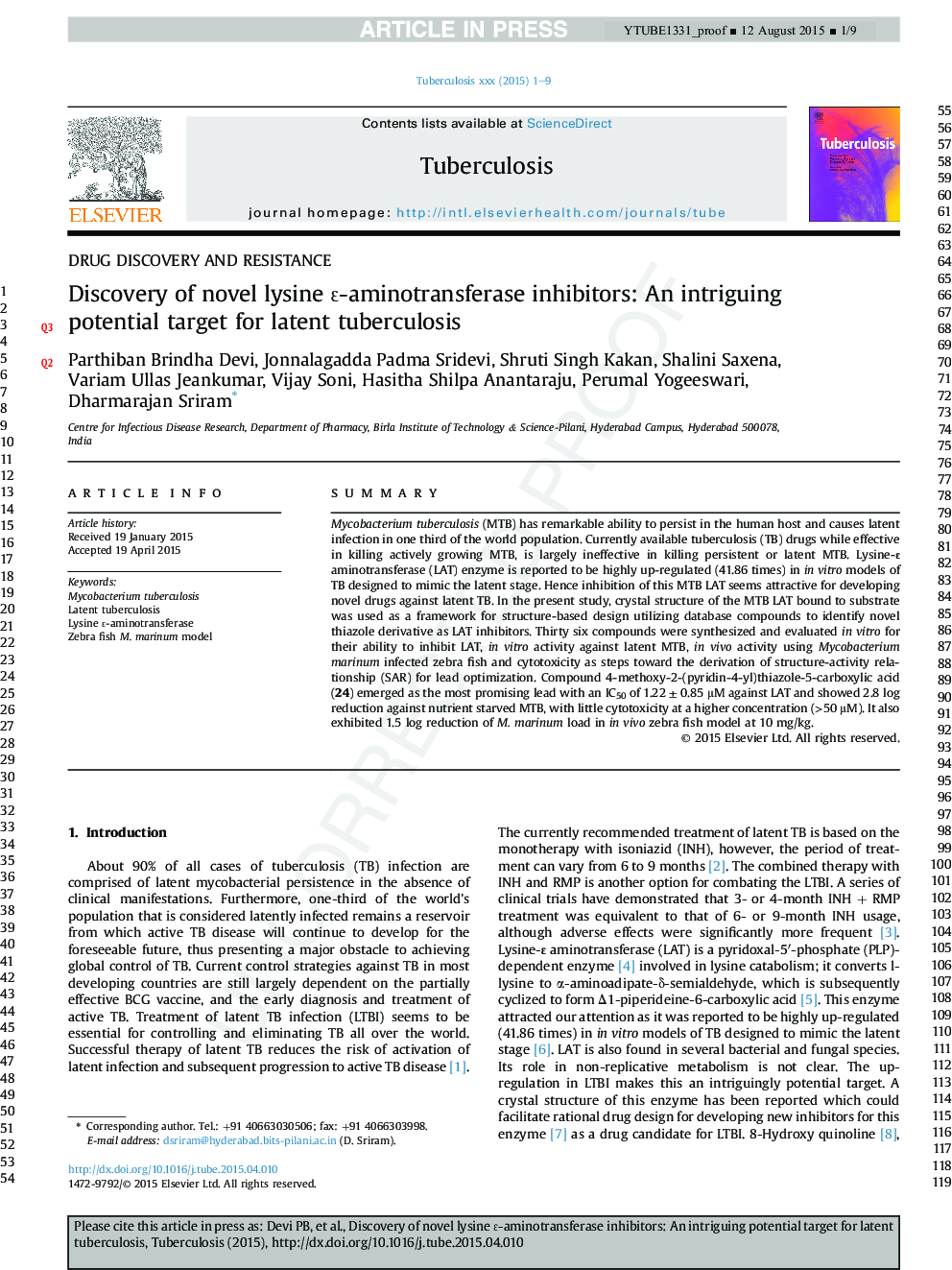| Article ID | Journal | Published Year | Pages | File Type |
|---|---|---|---|---|
| 10961976 | Tuberculosis | 2015 | 9 Pages |
Abstract
Mycobacterium tuberculosis (MTB) has remarkable ability to persist in the human host and causes latent infection in one third of the world population. Currently available tuberculosis (TB) drugs while effective in killing actively growing MTB, is largely ineffective in killing persistent or latent MTB. Lysine-É aminotransferase (LAT) enzyme is reported to be highly up-regulated (41.86 times) in in vitro models of TB designed to mimic the latent stage. Hence inhibition of this MTB LAT seems attractive for developing novel drugs against latent TB. In the present study, crystal structure of the MTB LAT bound to substrate was used as a framework for structure-based design utilizing database compounds to identify novel thiazole derivative as LAT inhibitors. Thirty six compounds were synthesized and evaluated in vitro for their ability to inhibit LAT, in vitro activity against latent MTB, in vivo activity using Mycobacterium marinum infected zebra fish and cytotoxicity as steps toward the derivation of structure-activity relationship (SAR) for lead optimization. Compound 4-methoxy-2-(pyridin-4-yl)thiazole-5-carboxylic acid (24) emerged as the most promising lead with an IC50 of 1.22 ± 0.85 μM against LAT and showed 2.8 log reduction against nutrient starved MTB, with little cytotoxicity at a higher concentration (>50 μM). It also exhibited 1.5 log reduction of M. marinum load in in vivo zebra fish model at 10 mg/kg.
Related Topics
Life Sciences
Immunology and Microbiology
Applied Microbiology and Biotechnology
Authors
Parthiban Brindha Devi, Jonnalagadda Padma Sridevi, Shruti Singh Kakan, Shalini Saxena, Variam Ullas Jeankumar, Vijay Soni, Hasitha Shilpa Anantaraju, Perumal Yogeeswari, Dharmarajan Sriram,
